
![]() EX Snapshot
EX Snapshot
IN Grocery 2023
Trends in grocery employee experience 2023
The trends and themes currently defining the grocery employee experience, and the tactics grocery leaders are using to maximize productivity and performance.
![]() EX Snapshot
EX Snapshot
IN Grocery 2023
The trends and themes currently defining the grocery employee experience, and the tactics grocery leaders are using to maximize productivity and performance.
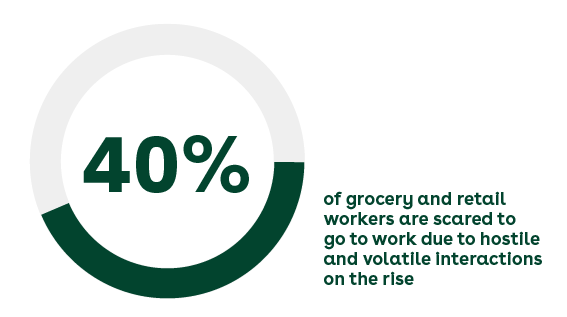
Unfortunately, one in five grocery workers don’t feel prepared to handle these interactions, saying they don’t have the right tools and empathetic training. As a result, 40% of associates feel scared to go to work.

Trend #2
“No matter how hard or how long they work, many low-wage workers cannot climb out of poverty,” writes Joseph Fuller and Manjari Raman in their Harvard Business Review article, The High Cost of Neglecting Low-Wage Workers. “Workers who live in households earning less than $40,000 a year—sometimes even less than $20,000—are often on the verge of homelessness, food insecurity and insolvency. Employers who are oblivious to their personal circumstances are unable to see what really matters to them: stability and security.”
According to the Deskless Report: Retail Edition, Grocery workers know what’s expected of them—but they lack the community, communication and development to feel the stability they need to be productive and successful.
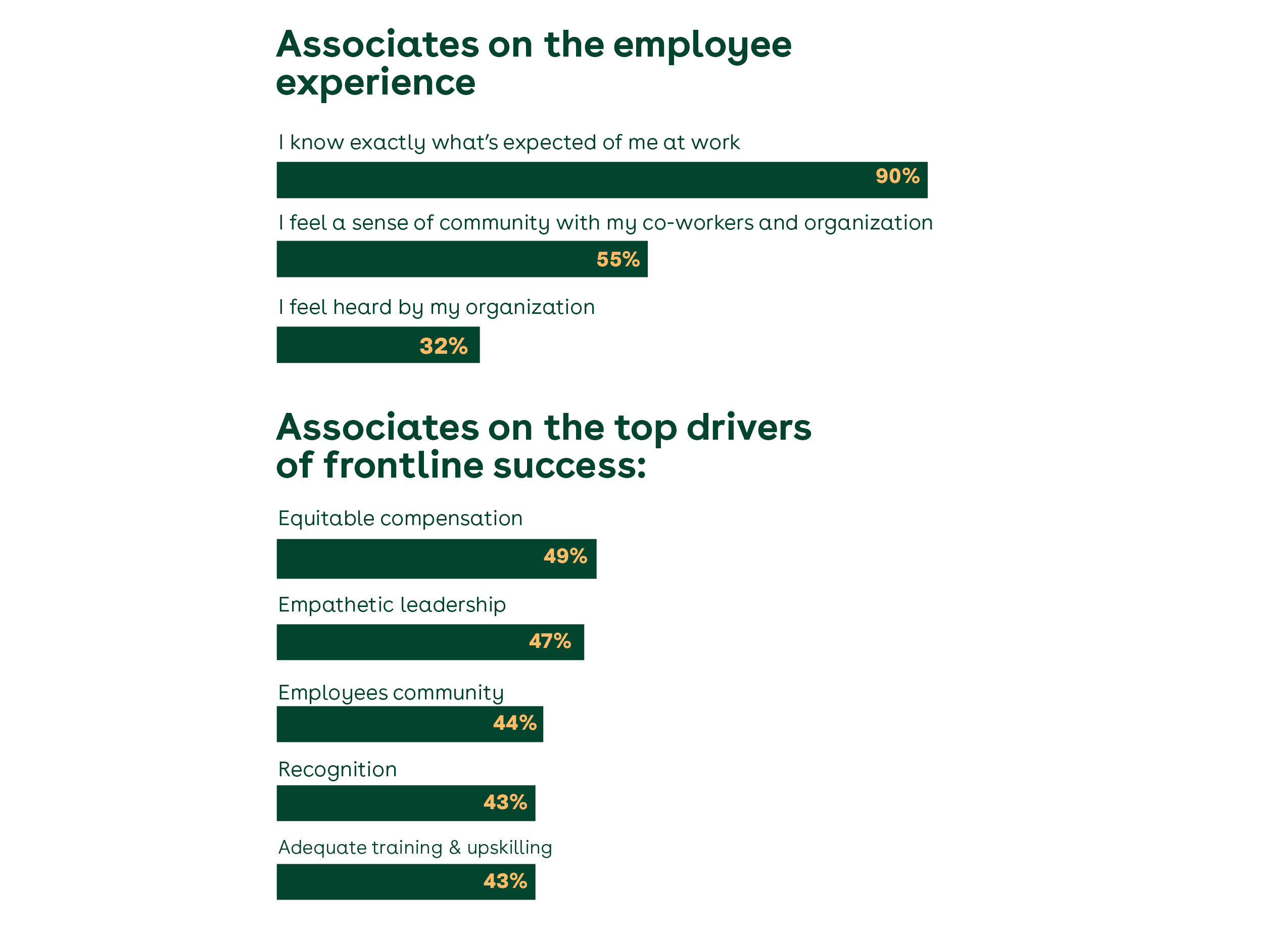

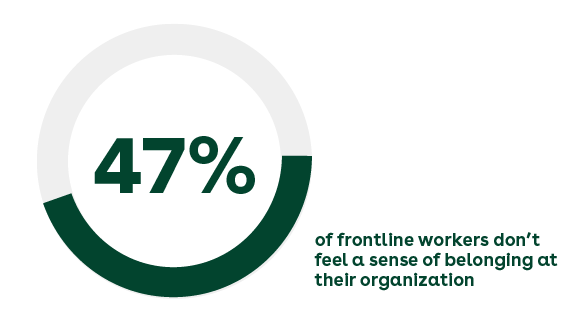
There’s also a strong correlation between that need for stability and associates’ ability to get things done at work. A recent report by RedThread Research found that one of the top three barriers to frontline performance is a lack of stability in associates’ personal lives or finances.
And overcoming this obstacle to productivity doesn’t necessarily mean raising pay. It can mean experimenting with different scheduling approaches to improve consistency, offering upskilling and development opportunities, and finding other ways to show empathy and create a sense of belonging that is currently missing from many workplaces.

“We’ve taken a look at our schedules in general to allow for more of a gig approach to how our associates can work. They can bid on shifts, forfeit shifts, request time off, swap shifts . . . From a flexibility standpoint, we’ve put an emphasis on breaking down those traditional retail and grocery scheduling walls.”
– Tom Rudar, Talent Manager at Heinen’s Grocery Store
In The Know Episode 15: Finding the Formula for Solving the Labor Shortage Problem
Trend #3
Safety protocols were the norm through the pandemic, but even as grocery continues to adjust to the “new normal,” workplace safety remains a top priority. In fact, of the top five most popular topics in Axonify’s Content Marketplace used by grocers, four are safety-related.
And no wonder: investing in improving occupational health and safety has massive impacts on a grocer’s ability to maximize productivity and achieve operational consistency, but it also has a substantial financial impact.

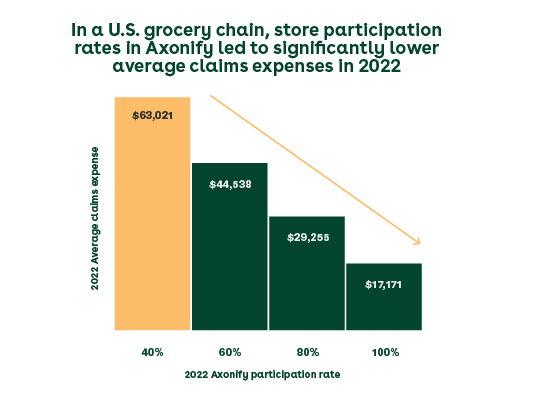
Case in point:
A recent analysis of a U.S. grocery chain found a significant correlation between employee enablement and employee claims. Stores that had progressed further in onboarding training on Axonify had fewer claims with associated expenses in 2022 compared to 2021. In other words: more employees are getting the knowledge they need to stay safe at work and prevent accidents, leading to lower claim expenses.
Trend #4
The pandemic sent shrink rates soaring from 2% to 5% or higher in 2020. Now, thanks to inflation and other financial market shifts, theft and organized retail crime is still on the rise, with meat, seafood, candy, alcohol and energy drinks among the top food and beverage items targeted by ORC. Grocery has been lumped into the whopping $94.5 billion in losses caused by retail shrink in 2021—but one Canadian industry expert estimated that average-sized food retail stores sees up to $5,000 worth of groceries stolen each week.
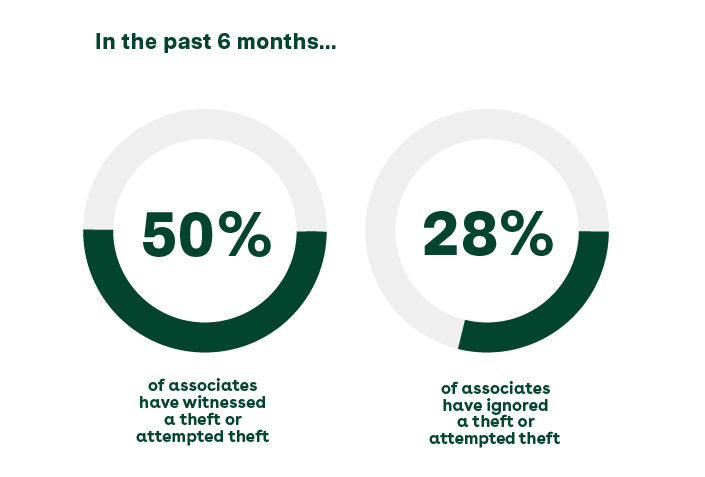
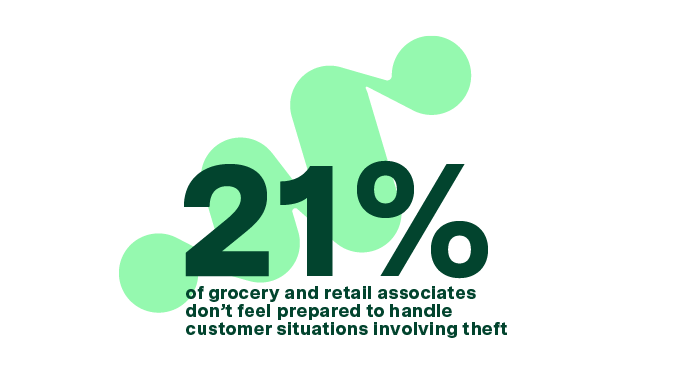
Understandably, loss prevention is on every grocery executive’s mind. But when building out a loss prevention strategy, a common mistake is leaving staff out of the process. In a recent poll of grocery and retail workers, 21% said they don’t feel prepared to handle theft, leading 28% to ignore a theft or attempted theft.
Trend #5
“Come for a job, stay for a career.” Not a brand-new concept, but as staffing constraints continue, grocery is still struggling to shift associates’ mindsets around the long-term viability of a career in the industry. But how do you show-not-tell these employees that they have a real future in grocery? Upskilling.
Gone are the days when grocery organizations could afford to hesitate on upskilling during labor shortages because of the fear that too much investment in workers will be wasted when they move on.
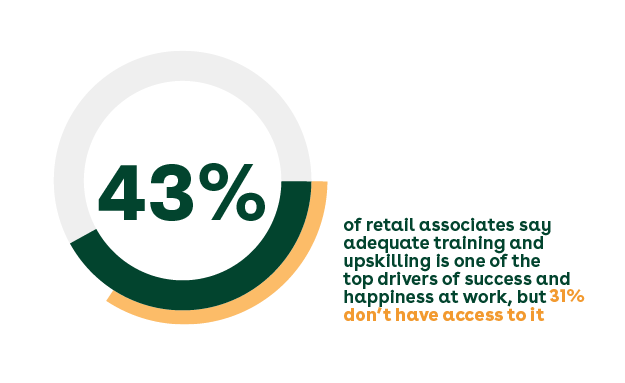

“People don’t want to do the same thing every day anymore.”
– Tom Rudar, Talent Manager at Heinen’s Grocery Store
In The Know Episode 15: Finding the Formula for Solving the Labor Shortage Problem
On the contrary, it’s a vital step in retaining a productive workforce. Recent research found that adequate training and upskilling are among the top contributors to frontline happiness and success. Training and upskilling build long-term relationships, especially with hard-to-replace top performers, and also provide a steady stream of upward growth to support managers. Win-win.
But it’s not just about retention. Grocers cross-train their people across different departments or even locations, using skills to be more agile with their workforce.
Download the PDF version here!